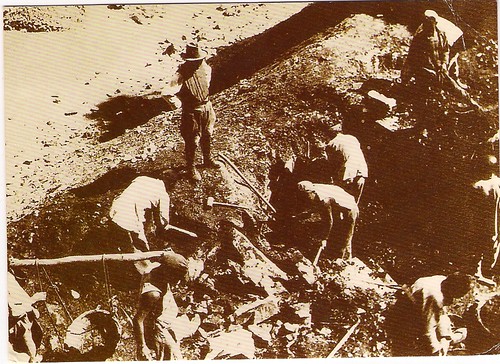Excavation site of the Peking Man ruins in 1927, China
Zhoukoudian or Choukoutien is a cave system near Beijing in China. It has yielded many archaeological discoveries, including one of the first specimens of Homo erectus, dubbed Peking Man, and a fine assemblage of bones of the gigantic hyena Pachycrocuta brevirostris. The Peking Man lived in this cave approximately 200,000 to 750,000 years ago.
The Peking Man Site was discovered by Johan Gunnar Andersson in 1921 and was first excavated by Otto Zdansky in 1921 and 1923 unearthing two human teeth. These were later identified by Davidson Black as belonging to a previously unknown species and extensive excavations followed.
Peking Man, also called Sinanthropus pekinensis (currently Homo erectus pekinensis), is an example of Homo erectus. A group of fossil specimens was discovered in 1923-27 during excavations at Zhoukoudian (Chou K'ou-tien) near Beijing (at that time known as Peking), China. More recently, the finds have been dated from roughly 500 000 years ago, although a new study suggests they may be as much as 680 000-780 000 years old.





















0 comments:
Post a Comment